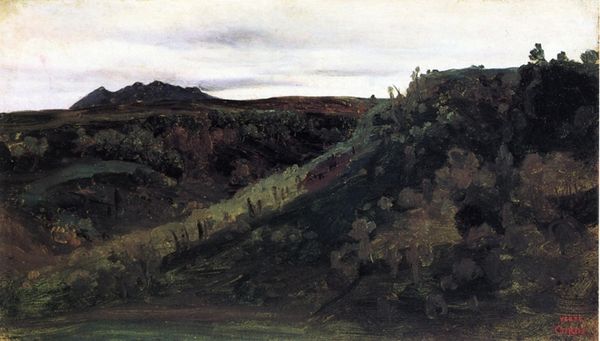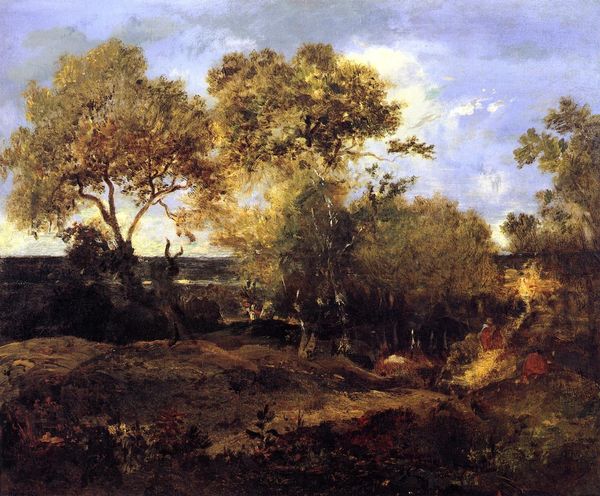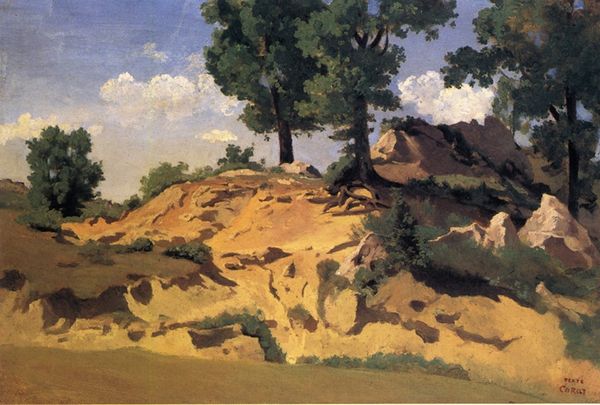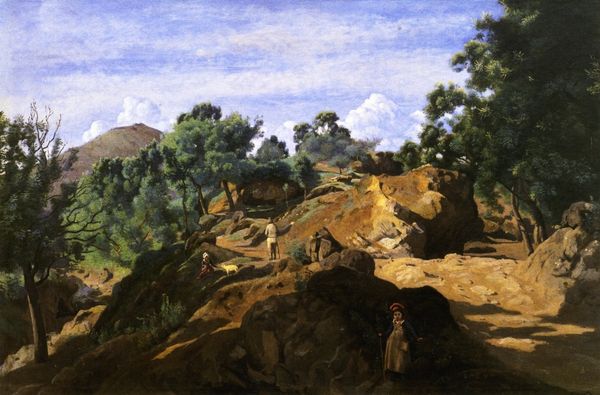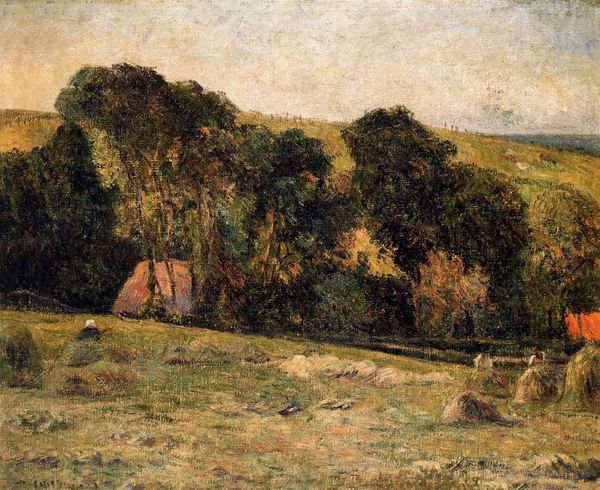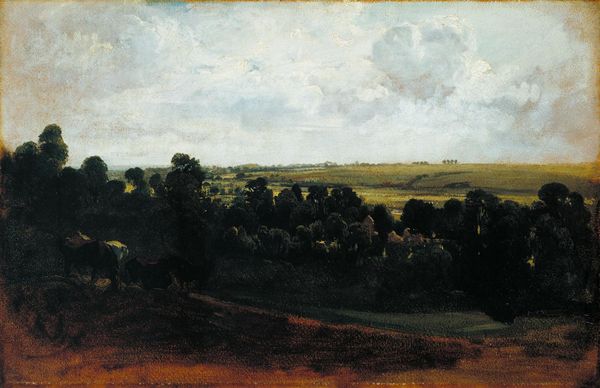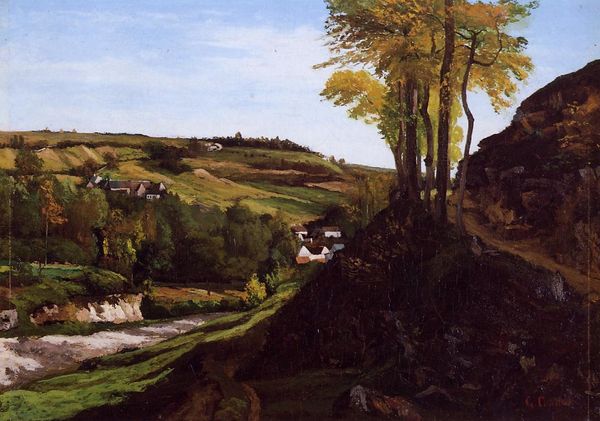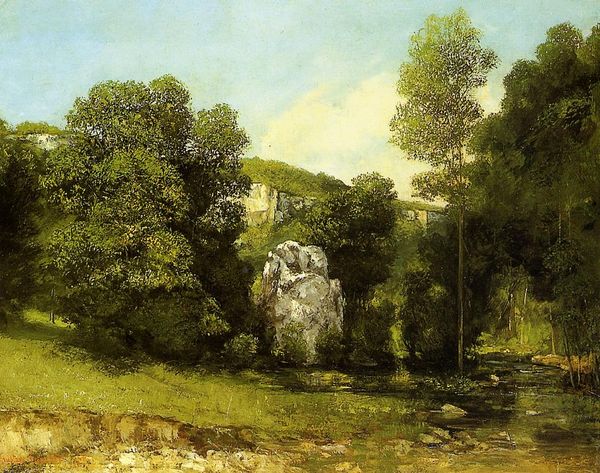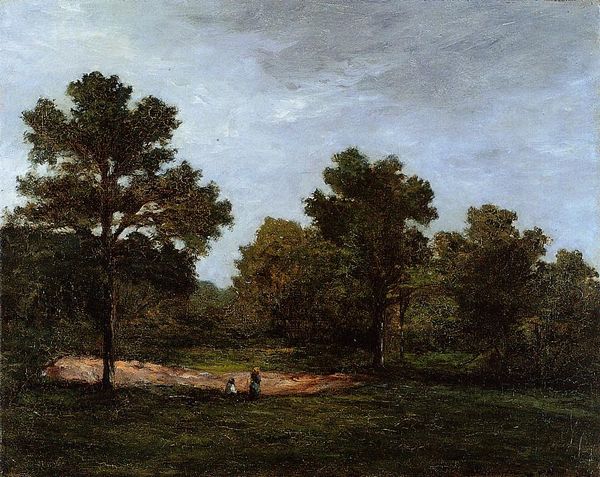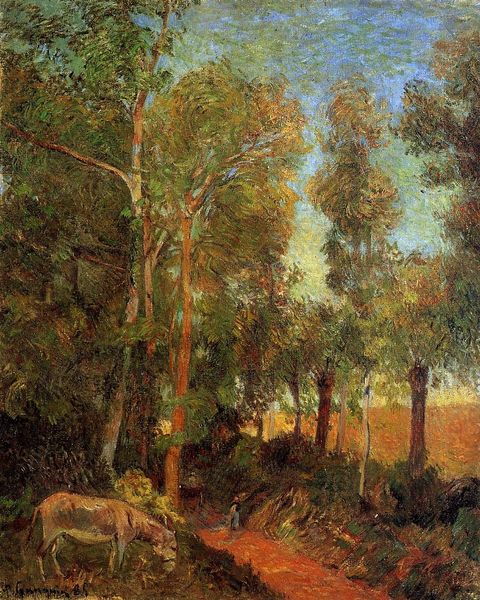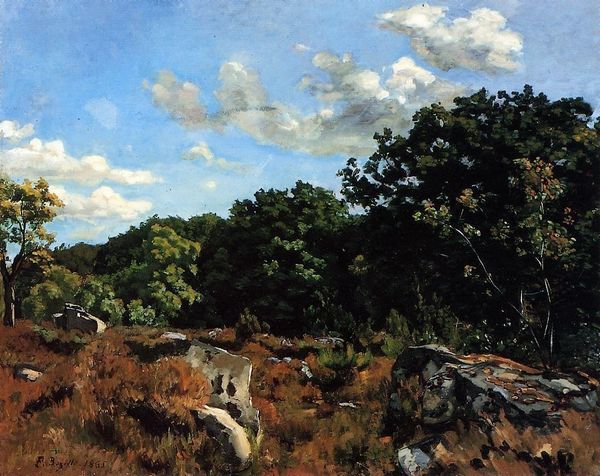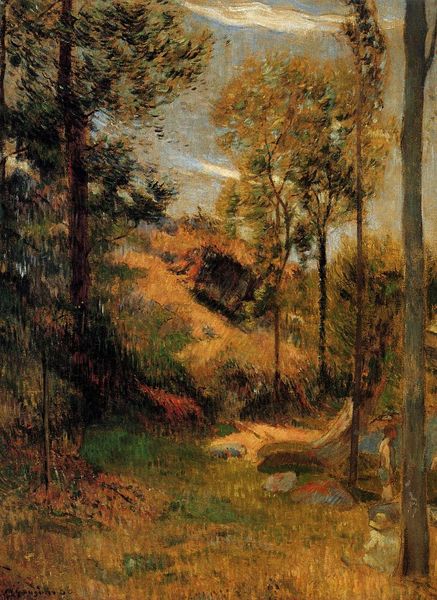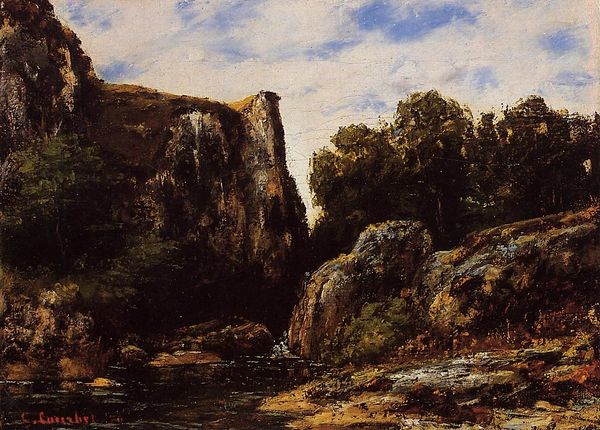
Dimensions: 36 x 51.8 cm
Copyright: Public domain
Editor: So, here we have Corot’s "Two Italians, an Old Man and a Young Boy," painted in 1843 using oil paints, presumably en plein-air. I’m struck by how earthy it feels; you can almost feel the rough texture of the rocks and the scrubby vegetation. What do you see in this piece, considering its context? Curator: It's important to consider Corot's painting in light of 19th-century artistic production. The "plein-air" aspect is key; it signals a shift towards valuing direct engagement with the landscape. Oil paint, mass produced and readily available, allowed artists to create such works more easily than ever before. But who are these "Italians" and what kind of labor are they performing, and in what economy? Editor: That's interesting. I hadn’t thought about the availability of materials shaping the art itself. Do you think this reflects the increasing industrialization of the period? Curator: Precisely! The shift from handcrafted pigments to commercially produced oil paints mirrors the broader industrial revolution. Consider the social context – who had access to these new materials and methods? Who could afford the time and training to create "art," and what message about that class does the artwork communicate or obscure? Editor: So, looking beyond the pretty landscape, we have to think about the materials used, and how the shift to industrially produced paints allowed more artists –or at least a certain class of artists–to create these types of works. Curator: Exactly. By focusing on materiality and means of production, we move past merely aesthetic appreciation and engage with art as a product of specific social and economic conditions. Editor: I see, so much to consider. Thank you! Curator: Indeed, thinking about the material conditions changes everything, doesn't it?
Comments
No comments
Be the first to comment and join the conversation on the ultimate creative platform.
